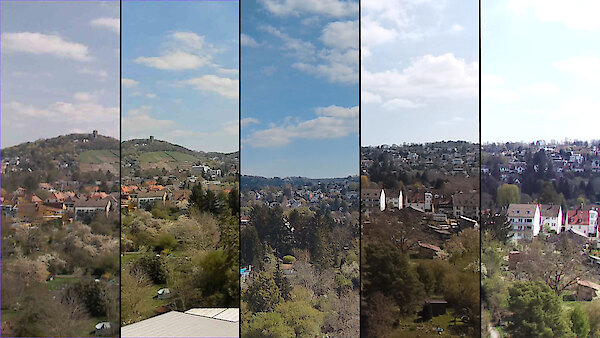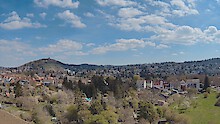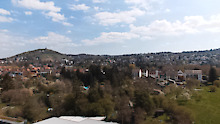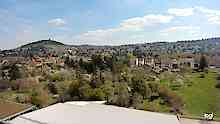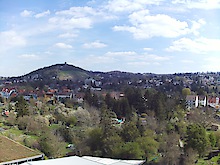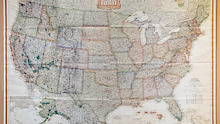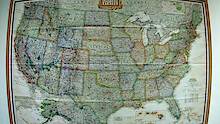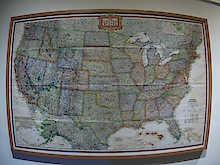Webcam Roundup 2022: StreamCam, Brio, Kiyo Pro, Facecam, HQ Cam
My last comparison between the Logitech c922 and the Raspberry Pi High Quality Camera left me wanting: The Logitech c922 has a very bad image quality but the Raspberry Pi High Quality Camera is very cumbersome to use as a webcam.
So, off to our favourite online bookstore. Shortly after, 4 new shiny contemporary webcams arrived for testing:
- Logitech StreamCam
- Logitech Brio
- Razer Kiyo Pro
- Elgato Facecam
I will again include the Raspberry Pi High Quality Camera as a point of reference and because it’s fun to see what you could do in the DIY department.
Webcam Specifications
First, some specs. I only include the most notable ones that I deem relevant for actual use.
| Logitech StreamCam | Logitech Brio | Razer Kiyo Pro | Elgato Facecam | Raspi HQ Cam | |
|---|---|---|---|---|---|
| Resolution | 1080p60 | 4k30, 1080p60 | 1080p60 | 1080p60 | Video: 1080p30, Photo: 12Mpix |
| FOV | 78° | 90° | 103° | 82° | 63° with 6mm lens |
| Focal Length (35mm) | 27mm | 22mm | 17mm | 24mm | 33mm |
| Focus | Auto | Auto | Auto | Fix | Manual |
| Connector | USB-C Cable | USB-C | USB-C | USB-C | FPC Cable |
| Linux | Yes | Yes | Yes, but not for me | Yes | Exclusively |
| Microphone | Stereo | Stereo | None | None | None |
| Introduction | 2020 | 2017 | 2021 | 2021 | 2022 |
Right off the bat we can see some variety here: The focal length of the webcams are quite different, as are their feature sets.
Of course I can’t test things like wether you need a microphone or if a field of view is right for you. I will instead focus on the image quality of the webcams.
Photographic Tests
To capture the images I use the vendor specific tools as far as they are available: Logitech Capture, Razer Synapse and Elgato Camera Hub. The Raspberry Pi tools are different this time. With Raspberry Pi OS the camera software stack changed to libcamera.
Unless mentioned, all cameras operate on their auto settings.
All cameras: 1080p Outside
First, a test in excellent light but demanding in dynamic range: The white clouds at the top and dark tree shadows in the foreground.
The Raspi HQ Cam lens was closed half-ish (no scale) and I adjusted the exposure time by one stop.
The Logitech StreamCam delivers a rather soft image with a strong magenta tint. Despite the longer focal length in comparison to the other webcams the objects in the frame don’t show any additional details. The colors feel washed out and we can see encoding artefacts, especially in the sky area. The dynamic range of the StreamCam seems insufficient for the upper right portion of the sky despite the tree shadows in the foreground are already pure black. For me, the weakest image in this comparison. The lens seems well corrected, though.
Despite being the oldest product in the test and even though its FOV is wider, the Logitech Brio resolves much more detail than the StreamCam. The colors seem more natural and have no tint. The image looks brighter overall but the sky is not blown out. Encoding artefacts seem to be a Logitech thing, though: the sky area has lots of them like with the StreamCam. Also, we can see a bit of barrel distortion, especially on the roof line.
If you like the sharpness of the Brio, the Razer Kiyo Pro will elate you: It’s even sharper. Even though it has the widest field of view of the tested webcams, it produces the most detailed image. The colors are nice and punchy and the image looks very HDR: no blown out parts in sight. Also, there are no encoding artefacts. But why are the buildings leaning to the side? Well, the lens has a huge amount of barrel distortion. Another issue is the autofocus. It just won’t. It keeps hunting and hunting, even in perfect lighting conditions and a subject basically at infinity.
The Elgato Facecam is more in the ballpark of the Logitech StreamCam: A soft image with limited dynamic range and unnatural colors. On the other hand, there is no tint, no encoding artefacts and the lens seems well corrected. Also, the Elgato Facecam has a fixed focus lens that is optimized for close subjects. So not the ideal landscape camera but to be fair: they don’t try to sell it as such.
At last, the Raspberry Pi High Quality Camera: Quite an acceptable image but a bit blown out in the sky. Maybe I should have exposed with -1.5 EV instead of -1 EV compared to the auto settings. The lens seems ok sharpness wise when stopped down and there are no artefacts from either the encoding or an overaggressive sharpening. With the pronounced barrel distortion, it kind of looks like the Kiyo Pro image.
Brio/HQ Cam: Max Resolution Outside
But the Raspberry Pi High Quality Camera can do more: up to a 12 Mpix image when used in stills mode. We compare that to the 4k image of the Logitech Brio:
Both cameras gain in sharpness, but the Raspberry Pi High Quality Camera much more so than the Brio. In fact, some areas of the Brio image look like there are more pixel but not more information. For instance look at the crane in the left of the image, just above the treeline. The Raspi HQ Cam gains a lot all over the image.
All Cameras: 1080p Map
But real life images are irrelevant! We want static, flat, close up test charts!
Well, here you go. The map is located in a room evenly lit by multiple LED lights. Again, all webcams on auto, the Raspi lens is wide open.
The Logitech Streamcam continues its bad performance: soft with a distinct magenta tint. But we can now clearly see that the lens is well corrected.
Not so much the Logitech Brio. Also, its lens is only sharp in the middle of the frame. The further you go to the corners, the less sharp it becomes. That explains the missing sharpness in the 4k image above.
The image from the Razer Kiyo Pro looks like it was shot from the inside of a pint glass: loads of barrel distortion. Apart from that, it’s the sharpest image in this test, again. But the autofocus: totally unusable. I spent like 5 minutes getting one sharp image for this test.
Now the Elgato Facecam: To be honest, I had high hopes for this webcam. The commercials emphasize image quality, but my tests cannot confirm that. Even though the distance to the subject was right this time, the webcam does not produce a sharp image. And the image presented here already uses sharpness level 2 of 3 in Elgato Camera Hub. Quite disappointing. The lens seems to be well corrected, at least. Also, the image seems to be really clean. One can see that very well in the video: noise is well controlled.
The Raspberry Pi High Quality Camera has again a similar characteristic as the Brio: Sharp in the center but not so much in the corners with a distinct barrel distortion.
Brio/HQ Cam: Max Resolution Map
We can see that also in 4k:
Both cameras only improve in the center with the increased resolution. The corners stay weak.
Results
A quick reminder on the test results so far:
| Logitech StreamCam | Logitech Brio | Razer Kiyo Pro | Elgato Facecam | Raspi HQ Cam |
|---|---|---|---|---|
| Lens well corrected | Sharp in the center | Sharp overall | Lens well corrected | Plenty resolution |
| Nice colors | Nice colors | Low noise | ||
| Good dynamic range | Good dynamic range | |||
| Soft image | Distinct barrel distortion | Crazy barrel distortion | Soft image | Cumbersome to use as webcam |
| Magenta tint | Soft towards the edges | Unusable autofocus | Weak dynamic range | Soft wide open |
| Encoding artefacts | Encoding artefacts | Huge barrel distortion | ||
| Weak dynamic range |
Every camera has its unique flaws. Apparently the manufacturers manage to fix only one or two of them in the price bracket of 200 Euro. For the lens it seems to be either distortion or resolution, never both.
So: pick your poison. If you are looking for maximum resolution, take the Kiyo. It will focus evenually? Luckily no one will hear you swear, because it has no microphone.
If you need a 4k image, the Brio it is. If you need better low light capabilities, take the Facecam. At least it’s autofocus won’t hunt.
For me and after 2 years of pandemic induced indoor activities: I’ll take the StreamCam. The magenta tint will fix my skin color and its soft rendition seems beneficial as well.
